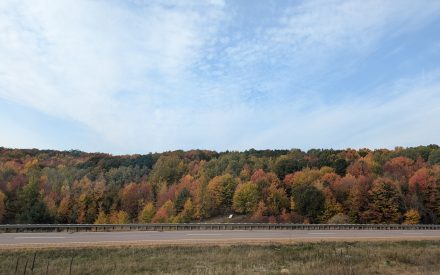Video Summary
Silva Gaku, farm financial management outreach specialist with UW–Madison Extension, provides an overview of financial assistance updates for agricultural producers following the passage of the One Big Beautiful Bill (OB3). This presentation outlines key changes to Price Loss Coverage (PLC), Agricultural Risk Coverage (ARC), and crop insurance programs, including increased reference prices, higher payment limits, and expanded premium subsidies.
Silva also highlights new benefits for beginning farmers and ranchers, including extended premium assistance and updated definitions. Learn what these changes mean for your farm’s financial planning and how to prepare for the 2025 and 2026 crop years.
Resources
Transcript
0:06
Thank you very much, Paul.
0:09
I will continue from where Professor Mitchell left off, specifically looking at what will happen in the future following the passage of the One Big Beautiful Bill.
0:23
So what we see happening in the future is that there will be higher statutory reference prices.
0:32
So when you look at wheat specifically, you will see that the price will be increasing by 15% from $5.50 to $6.35.
0:47
Looking at corn, the price will be increasing from $3.70 per bushel to $4.50 and that would be an 11% increase in the statutory reference price.
1:05
For soybean.
1:06
We expect that to go up all the way to $10 from $8.40 per bushel representing 19 percentage point increase.
1:23
For oats that would be increasing from $2.40 before the passage of the One Big Beautiful Bill to $2.65 per bushel after the passage, which represent about 10 percentage point increase in the prices or the 10% increase in the prices.
1:48
So this would mean that the effective reference prices that we will be seeing in the future would be relatively higher compared to what we saw under the 2018 Farm Bill.
2:02
And this in a way increases the likelihood of payouts being triggered for farmers.
2:09
So if you look at Price Loss Coverage, for instance, if the marketing average price goes below the effective reference price, then you expect producers who opted out for Price Loss Coverage to receive payout.
2:26
And with this being higher, our expectation is that it has increased the likelihood that producers would receive payout specifically for PLC.
2:40
When we continue to layout the changes from ARC and PLC orchestrated by the passage of OB 3, we also see that the county guarantee for agricultural risk coverage has also changed.
3:00
It has increased by 4 percentage points from 86% of benchmark value to 90% of the benchmark value.
3:11
What we know is that ARC triggers payout when the actual county revenue falls below this county guarantee.
3:21
So with the increase that we are seeing after the passage of the OB three, we are expecting that would increase the likelihood of ARC triggering payout for producers.
3:38
Another thing of interest is the payment limit.
3:42
Before OB 3, producers were limited to the extent to which they could be paid when payments are triggered.
3:51
For ARC it was at 10% of the benchmark revenue.
3:58
But with the passage of OB three, we are expecting that to be at 12% of benchmark value, which is representing 2 percentage points increase.
4:09
Now with these increases, we are expecting that yes, now with a higher cap, producers may be more likely to receive a higher payout for ARC when it is triggered since now we have a higher cap on the payment.
4:30
Producers are also to note that they would be allowed to make updates to their base acres in the coming years.
4:39
So with that, you should be on the lookout for documents that we’ll be putting out today. Specifically for the training 2025 crop year
4:50
OB 3 has made a change as to how or how much producers will receive.
4:58
The competition for the payout for PLC and ARC will be done for producers and the higher of this payout would be given to producers for the 2025 crop year.
5:16
Looking at crop insurance, what we see after the passage of OB 3 is that the crop insurance will be relatively cheaper at higher coverage levels.
5:30
Before OB three, at the 55% coverage level, the subsidy rate was around 64%, but that has been bumped up by 5 percentage points after the passage of OB three.
5:48
Pre OB 3, we also see that for the 60% coverage level, the subsidy level was around 64%.
5:57
That is equally increased by 5 percentage points to 69%.
6:04
We see the same thing at the 65% coverage level, same for the 70 coverage level.
6:14
And when you also look at the 75% coverage level, that has also be bumped up by 5 percentage points.
6:23
But as you go to the higher level of coverage, say 80%, we see about 3 percentage points increase in the subsidy.
6:35
The same applies to the 85% when you consider the basic and optional units.
6:43
For enterprise units, the changes usually occurred at the higher coverage levels, the first one being the 75% coverage level.
6:53
We see about 3 percentage points increase in the premium subsidy for producers. For the 80% level,
7:03
we also see another 3% increase or percentage point increase in the premium subsidy. At the 85,
7:16
we also see another three-percentage point increase in the subsidy, the premium subsidy for producers.
7:25
So the take away from this is that at the higher coverage levels, if you look at either basic optional units or the enterprise unit, producers are expected to pay lower premium because government is now taking a relatively higher chunk of the premium.
7:48
Beginning farmers and ranchers are not left out of what is likely to happen or the changes that we are going to see after the passage of OB 3.
7:59
We see that the definition of beginning farming has changed as well.
8:06
Premium assistance will not be extended from five years to 10 years.
8:11
So anybody who has started farming from year 1 to the 10th year is likely to receive premium assistance.
8:19
And this premium assistance is laid over what is already given to producers in general.
8:29
So in the first and second years, beginning farmers and ranchers are expected to receive about 5 percentage points increase in premium assistance.
8:42
In the third year, they are expected to see an additional 3 percentage points increase in premium assistance.
8:52
The other years we see a decline lower or lower than percentage by three percentage points.
9:00
What do we look for in going forward?
9:03
What I would say is that we are exercising some.
9:07
We should exercise some patience as we move forward.
9:11
Professor Mitchell, a team comprising Professor Mitchell, I and others would be looking at the sign up for the 2026 and we will be working on new tools using new data sets and this would help us in providing clear recommendations for you to take your decisions.
9:32
So please be on the lookout for these details on Professor Mitchell’s page and also on the Farm Management page.
9:41
We’ll also be providing more details on the Enhanced Coverage Option and the Supplementary Coverage Option and crop insurance in general for the 2026 period.
9:56
As I made mention of earlier in my presentation, producers would be able to update their base seekers.
10:04
We will be providing more information about these for producers to make decisions based off those documents we’ll make available.
10:15
Thank you.
10:16
That will be all for today.
10:19
I’ll be here for any questions.
Badger Crop Connect
Timely Crop Updates for Wisconsin
Second and fourth Thursdays 12:30 – 1:30 p.m.
Live via Zoom

 ▶ Fall 2025 Ag Policy Update
▶ Fall 2025 Ag Policy Update ▶ Fall 2025 Corn and Soybean Market Outlook
▶ Fall 2025 Corn and Soybean Market Outlook ▶ November 6 Ag Weather Outlook for Wisconsin
▶ November 6 Ag Weather Outlook for Wisconsin ▶ Unlocking the Potential of Biological Nitrogen Fixation in Corn
▶ Unlocking the Potential of Biological Nitrogen Fixation in Corn


